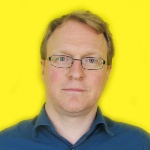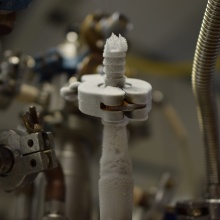If a solid is cooled to cryogenic temperatures, then very unusual electronic states can occur. Superconductivity, which is found in many metals at temperatures of order a few K or lower, is probably the most famous of these.
Since the electrons in solids directly interact with electrodynamic fields, they can be probed with optical spectroscopy. Here one has to adjust the photon energy to the energy scales of interest. Thus, if one is interested in physical phenomena that occur only at temperatures below a few K, then one has to use light with correspondingly low photon energy as probe. This means that one should use THz or GHz frequencies. This frequency range is at the border between light that is handled in free-space configuration and light that is guide e.g. in coaxial cables or waveguides, and it is technically challenging combine such low-frequency optics with cryogenic experimentation.
Therefore, we continuously develop new experimental approaches, which now allow us to study a wide range of material classes (superconductors, metals, semiconductors, dielectrics) with respect to their low-energy electrodynamic response. We can probe charges (e.g. free electrons or Cooper pairs) and spins (in magnetic materials) and thus access the key constituents of the unconventional phenomena in these materials.
Furthermore, since the relevant energy scales are so small in these materials, their properties can easily be tuned or even changed fundamentally by changing temperature or magnetic field or slightly changing the material composition. Thus we have a very good control concerning the unconventional phenomena that we are interested in, and we have a powerful tool at hand, optical spectroscopy at the most frequency range, to probe them.

Marc Scheffler
Dr.Senior scientist


